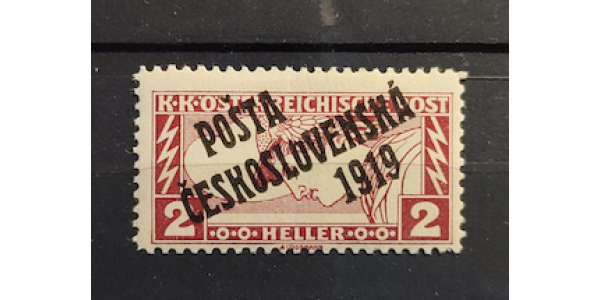Pošta Československá 1919: History of Rare Collector Stamps

Origin of the Czechoslovak Post 1919 Issue
The issue Czechoslovak Post 1919 is one of the most famous and controversial postage stamps in Czechoslovak history. After the establishment of Czechoslovakia on October 28, 1918, it was necessary to end the validity of Austrian and Hungarian stamps, which happened on February 28, 1919. Old stamps could be exchanged for new Czechoslovak ones free of charge until March 15, 1919.
The exchange and withdrawal of old stamps took several months. The stamps were sorted, counted, and packed into sheets of 100 or blocks of 25 and then sent to the economic headquarters in Prague.
Overprint "Czechoslovak Post 1919"
The remaining stamps were overprinted with the three-line text "Czechoslovak Post 1919" at the A. Hasse printing house in Prague. These overprinted stamps were sold at the philatelic counter of the main post office in Prague from December 12, 1919. Sales took place with a 50% surcharge on the nominal value, which sparked controversy.
Types of "Czechoslovak Post 1919" Overprints
Several types of overprints existed, differing in execution and typography used:
- Type A – Created using classic typesetting with Herold letters, used for overprinting most Austrian stamps.
- Type B – Differed in letter arrangement and finer printing, used on some Hungarian stamps.
- Type C – Created by variations in typesetting methods and contained minor printing defects.
- Types D, E, F, and G – These overprints were printed from different matrices, and their rare variants are highly valued among collectors.
The categorization of stamps was further complicated by the existence of types and subtypes of each overprint.
Original Austrian and Hungarian Stamps Used
The overprint "Czechoslovak Post 1919" was applied to various Austrian and Hungarian stamps:
- Austrian stamps – Included common prints featuring the imperial crown, Emperor Charles I, the national emblem, and various postage due and newspaper stamps.
- Hungarian stamps – Featured motifs of Turul, reapers, and the parliament building, as well as war surcharge stamps and postage due issues.
Some stamp variants were issued in limited quantities, making them highly valued by collectors.
Why Was the Czechoslovak Post 1919 Issue Unpopular?
Despite its attractiveness to collectors, this issue faced criticism:
- Uncertainty regarding overprinted values – It was not officially announced which stamps were overprinted.
- Limited sale – The stamps were only available at the philatelic counter in Prague.
- Forced purchase of bundles – The acquisition of rarer values was conditional on purchasing a larger number of common ones.
- High surcharge – The purchase price was 50% higher, limiting their actual use in postal operations.
- Confusion over rare variants – Unofficially overprinted stamps and printing errors appeared in circulation.
Are You Looking for Rare Postage Stamps?
If you are a collector or investor in classic Czechoslovak stamps, check out our e-shop for unique pieces from the Czechoslovak Post 1919 issue!
Interestingly, the most expensive auctioned Czechoslovak stamp comes from this series – the ribbed four-crown with an inverted overprint. It last changed hands in 2018, auctioned for 7.8 million CZK + auction fees.
Source: KARÁSEK, Jan, et al. Monograph of Czechoslovak Stamps, Volume II. Legionary 1919 – Economy and Science 1923 – Postal Stationery. Prague: Postal Philatelic Service, 1971.
More information and detailed stamp classification can be found in the Pofis or Merkur Revue catalogs.
